Small bedrooms present unique challenges for homeowners who want to maximize both space and style. Creating a functional sleeping area while maintaining room for daily activities requires creative solutions that go beyond traditional furniture arrangements. Bed nooks offer an innovative approach to bedroom design, transforming cramped quarters into cozy retreats that feel both spacious and intimate. These clever sleeping spaces utilize architectural features, built-in elements, and strategic room divisions to create dedicated rest areas without overwhelming the room. Whether you're dealing with an awkward attic space, a studio apartment, or simply want to free up floor space for other activities, bed nooks provide practical answers to common space constraints. From built-in alcoves to curtain-divided spaces, these designs maximize every square foot while adding character and charm to your bedroom. The beauty of bed nooks lies in their versatility and ability to adapt to different room sizes, architectural features, and personal preferences.
1. Built-In Alcove Beds with Custom Storage
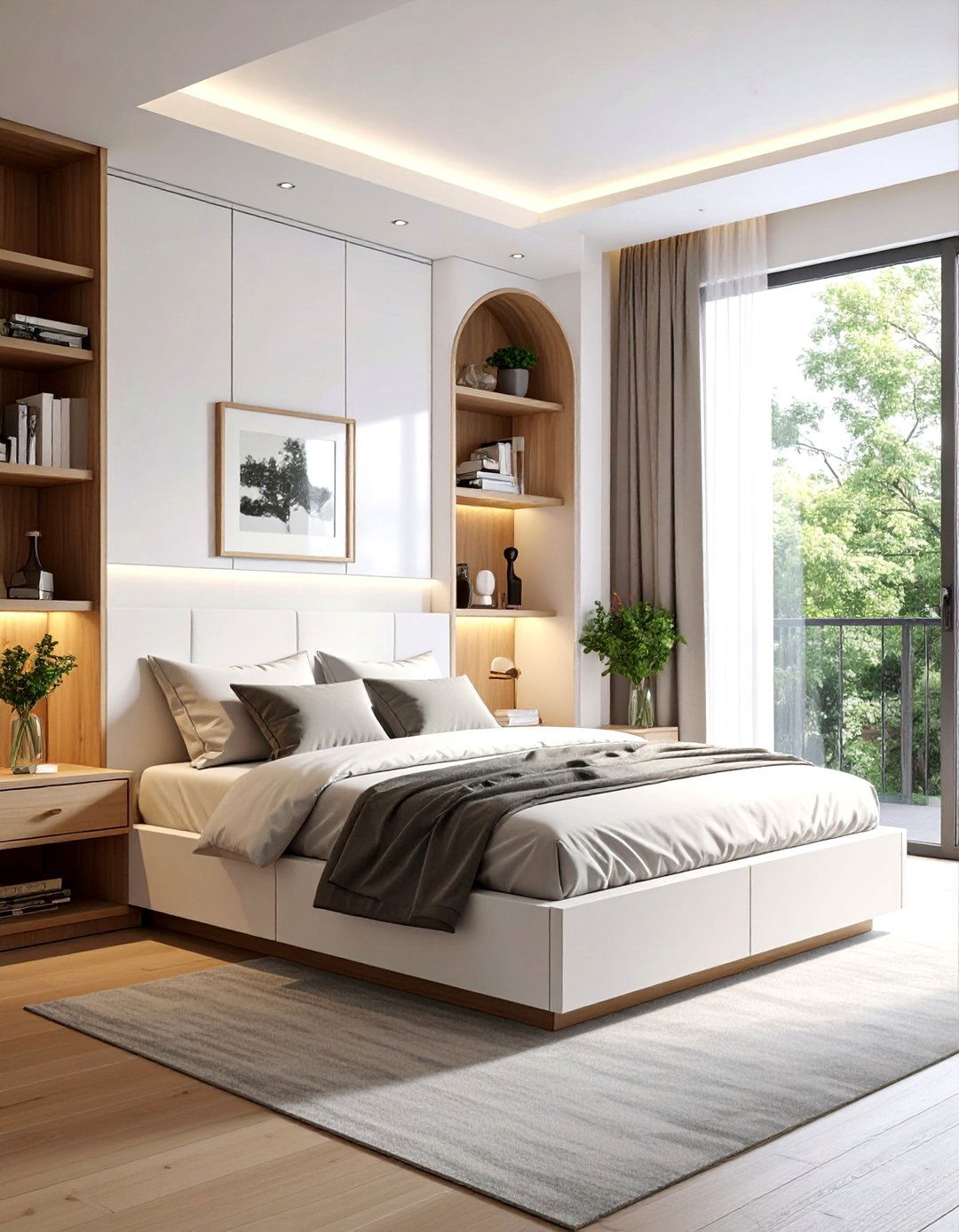
Have you ever wondered how to make a small bedroom feel both cozy and spacious? Built-in alcove beds create the perfect balance by nestling your sleeping area into a custom-designed recess. These sophisticated solutions integrate seamlessly with your room's architecture, featuring surrounding cabinetry that houses clothing, books, and personal belongings. The bed platform often includes drawers underneath for bedding storage, while overhead shelving provides space for decorative items and reading materials. Side compartments can accommodate everything from electronics to nighttime essentials. This design approach transforms dead space into highly functional storage while creating a cocoon-like sleeping environment. The built-in nature means every inch serves a purpose, eliminating the need for separate dressers or nightstands. Custom lighting integrated into the alcove design ensures perfect illumination for reading or relaxing. The result is a streamlined bedroom that feels larger than its actual square footage.
2. Attic Sloped Ceiling Bed Nooks
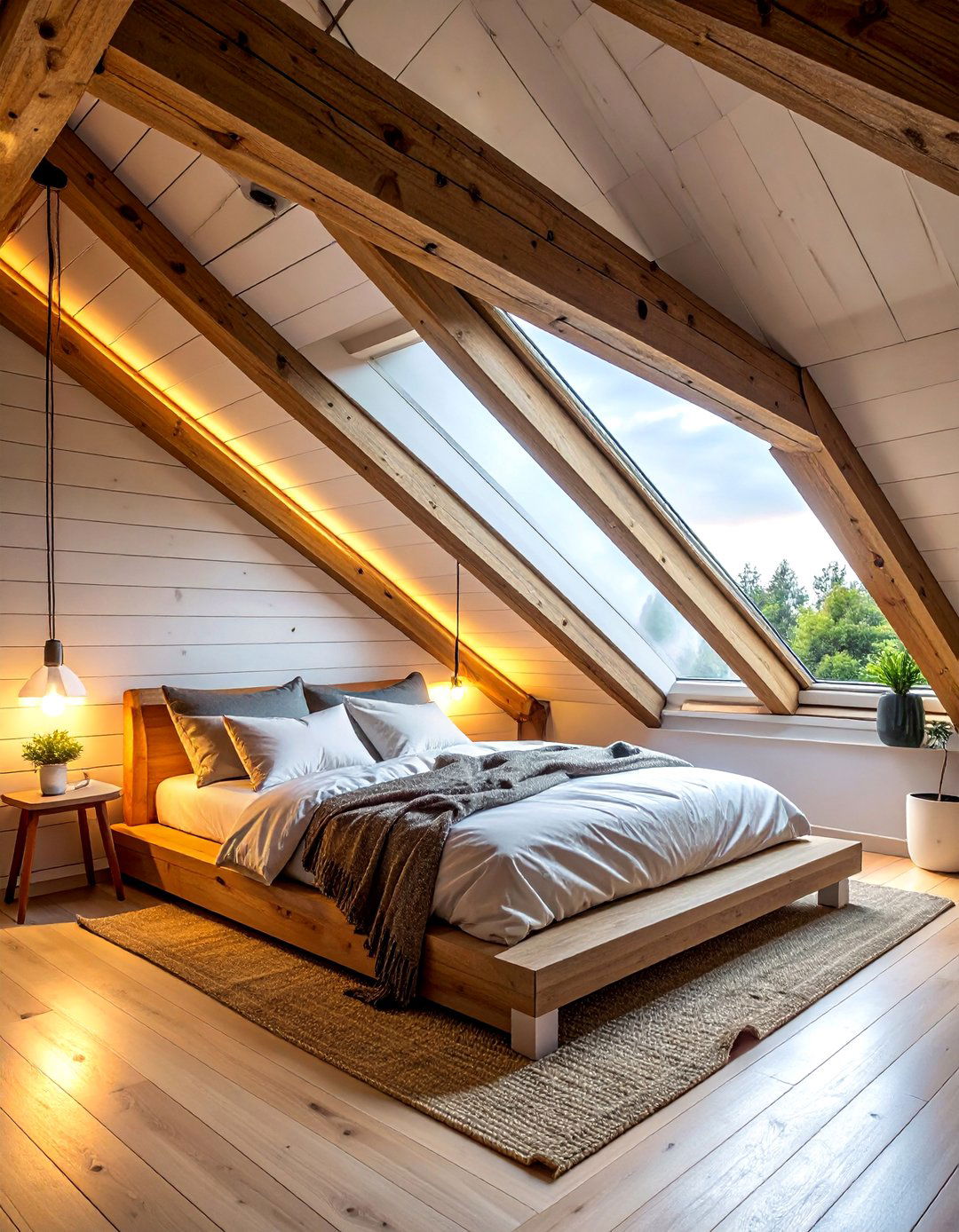
Those awkward attic spaces with sloped ceilings finally have their moment to shine as charming bedroom retreats. The naturally lower ceiling height creates an intimate sleeping environment that feels secure and cozy rather than cramped. Positioning your bed along the lowest part of the slope maximizes the remaining floor space for movement and storage. These nooks work particularly well with platform beds or mattresses placed directly on the floor. Small windows or skylights in sloped ceilings provide natural light while maintaining the intimate atmosphere. Adding built-in shelving along the knee walls creates storage for books and personal items. The unique architectural angles can be highlighted with contrasting paint colors or wallpaper that emphasizes the cozy den-like feeling. These spaces often become the most beloved areas of the home, offering a retreat-like atmosphere that encourages relaxation and peaceful sleep.
3. Curtain-Divided Studio Apartment Nooks
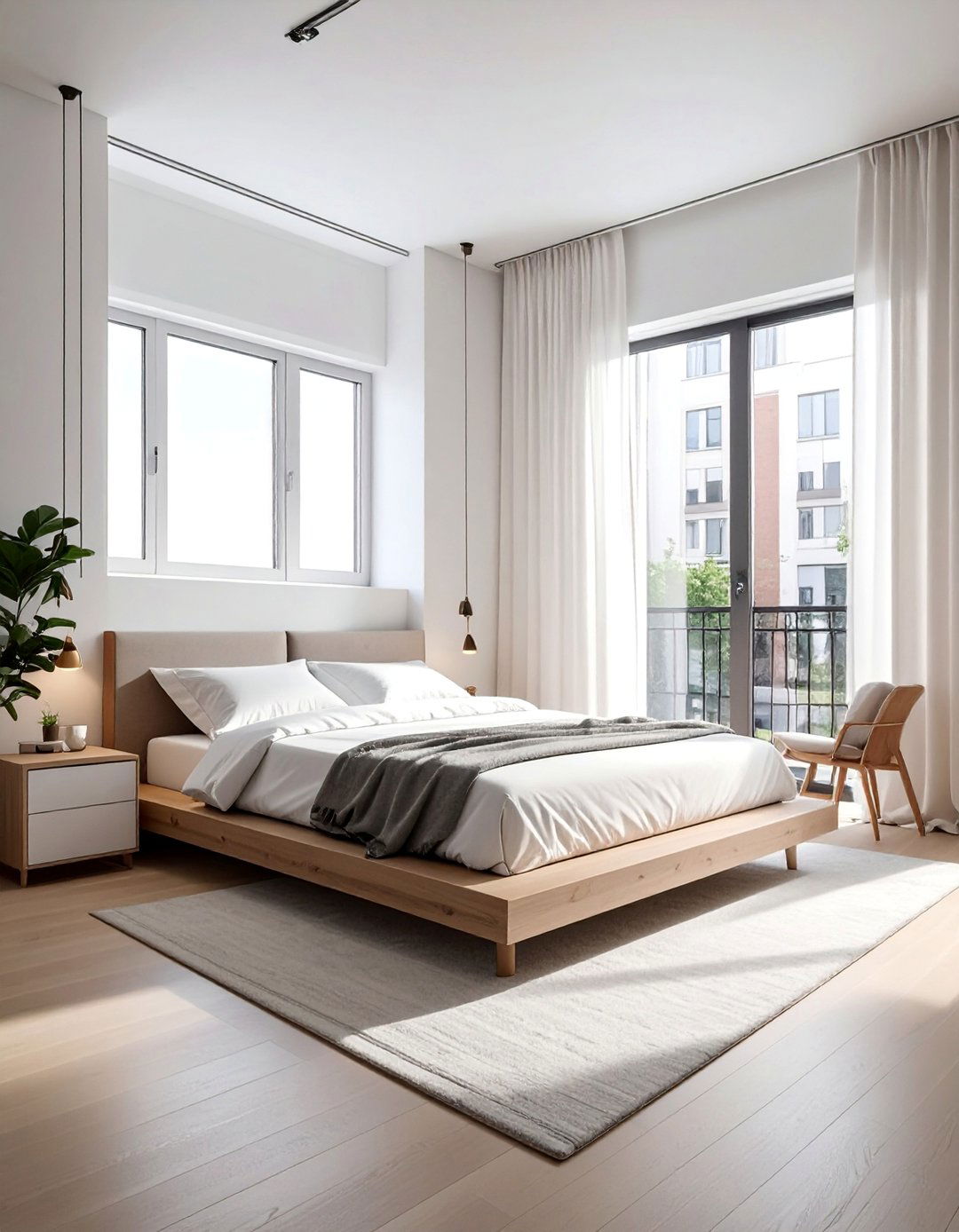
Studio living doesn't mean sacrificing privacy or style when you create a bed nook using strategic curtain placement. Floor-to-ceiling curtains suspended from tracks or rods instantly separate your sleeping area from living spaces while maintaining flexibility for daily activities. Choose fabrics that complement your overall design scheme while providing adequate light blocking for quality sleep. Multiple curtain layers allow you to control both privacy and natural light throughout the day. This approach works especially well when combined with a slightly elevated bed platform that creates visual separation even when curtains are open. The curtain system can extend beyond just the bed area to create a complete bedroom zone with space for a small dresser or reading chair. Installing curtains on three sides creates maximum privacy while leaving one side open for easy access. This solution offers all the benefits of a separate bedroom without permanent walls or major construction costs.
4. Window Seat Bed Transformations
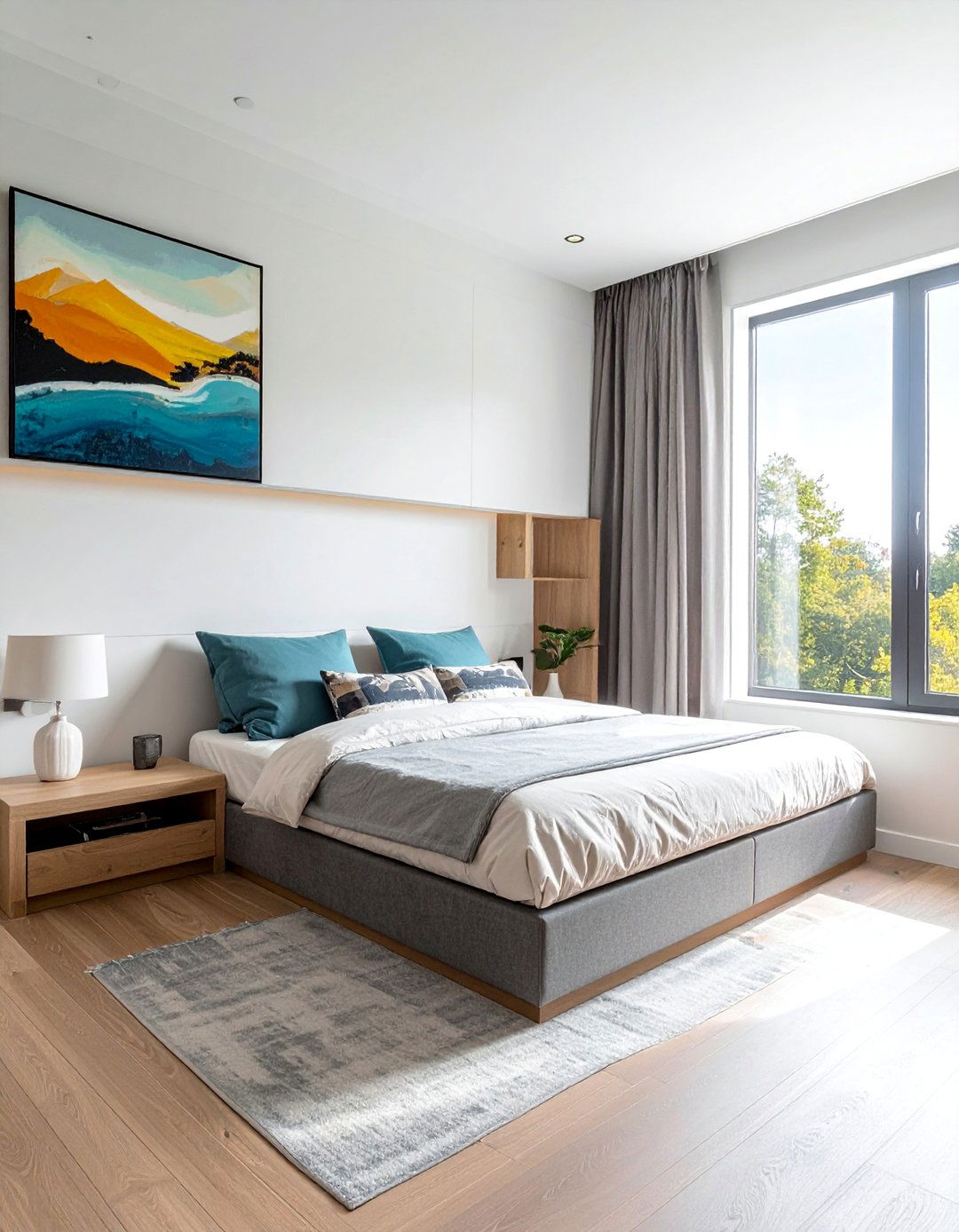
Why settle for just a window seat when you can create a functional sleeping space that doubles as daytime seating? Extending traditional window seats to accommodate a twin mattress creates a versatile nook perfect for guests or children. The built-in storage beneath the seat provides ample space for bedding, pillows, and seasonal items. Natural light from the window creates an appealing sleeping environment while offering beautiful views to wake up to. Adding curtains or blinds ensures privacy and light control when needed. The elevated position of window seat beds creates additional storage opportunities underneath while defining the sleeping area within the larger room. Built-in bookshelves or side compartments extend the functionality beyond just sleeping and seating. These nooks work exceptionally well in children's rooms, creating a magical sleeping space that feels like a treehouse or secret hideaway. The window connection to the outdoors adds an element of adventure to bedtime routines.
5. Under-Stair Sleeping Nooks
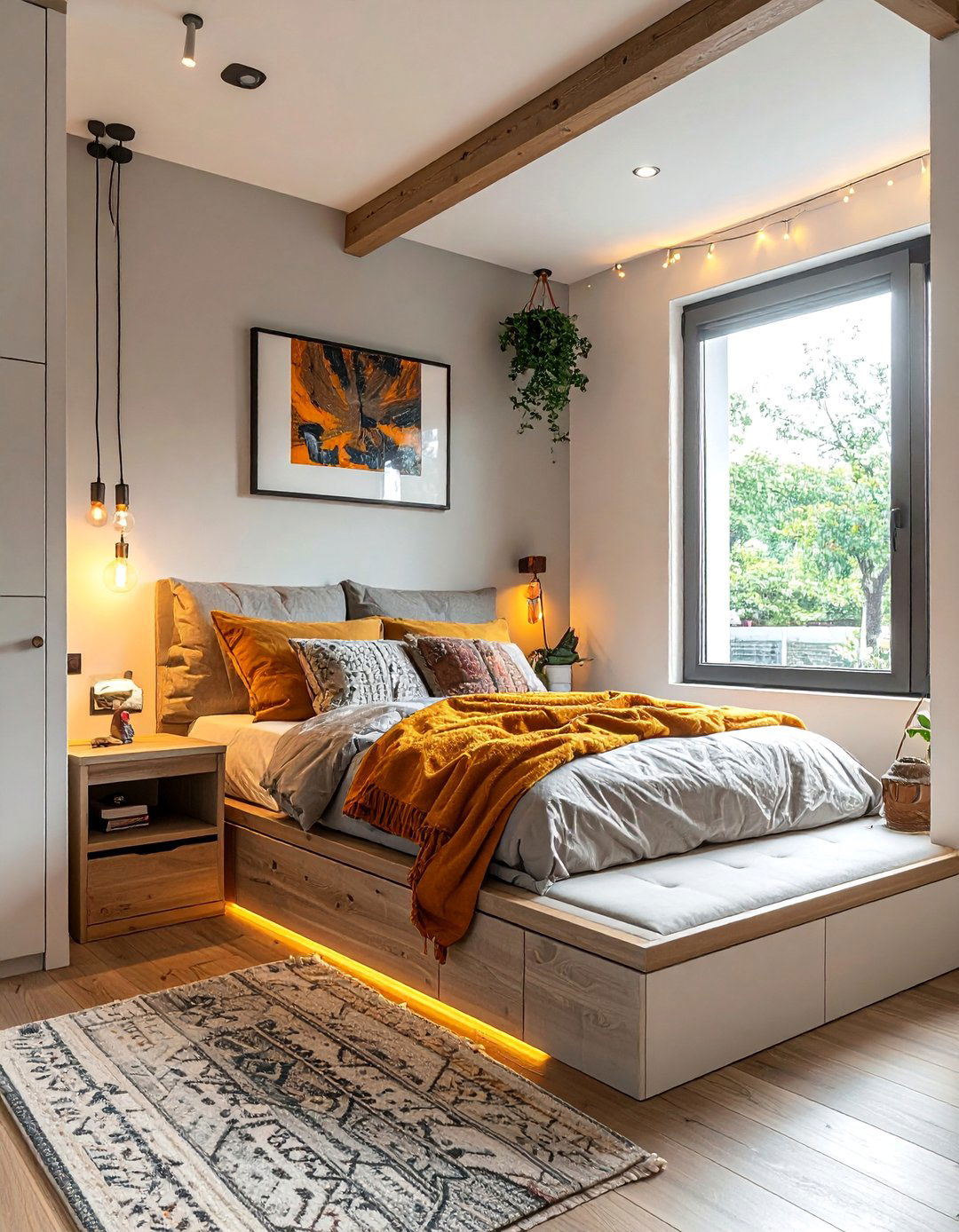
That awkward space beneath your staircase holds incredible potential as a cozy bed nook that maximizes every square foot of your home. The naturally enclosed feeling created by the stair structure overhead provides a den-like atmosphere perfect for restful sleep. Custom-built platforms can be designed to fit the exact dimensions of your under-stair space, creating a perfectly proportioned sleeping area. Built-in drawers in the platform provide essential storage for bedding and clothing while keeping the space organized. The slanted ceiling line can be emphasized with contrasting paint or wallpaper to create visual interest. Adding small reading lights or string lights creates a magical ambiance that transforms this utilitarian space into a sought-after retreat. Curtains hung at the entrance provide privacy while maintaining the open feel when not in use. These nooks work particularly well for children who love the adventure of sleeping in a unique, cave-like environment that feels separate from the rest of the house.
6. Floating Bed Platform Nooks
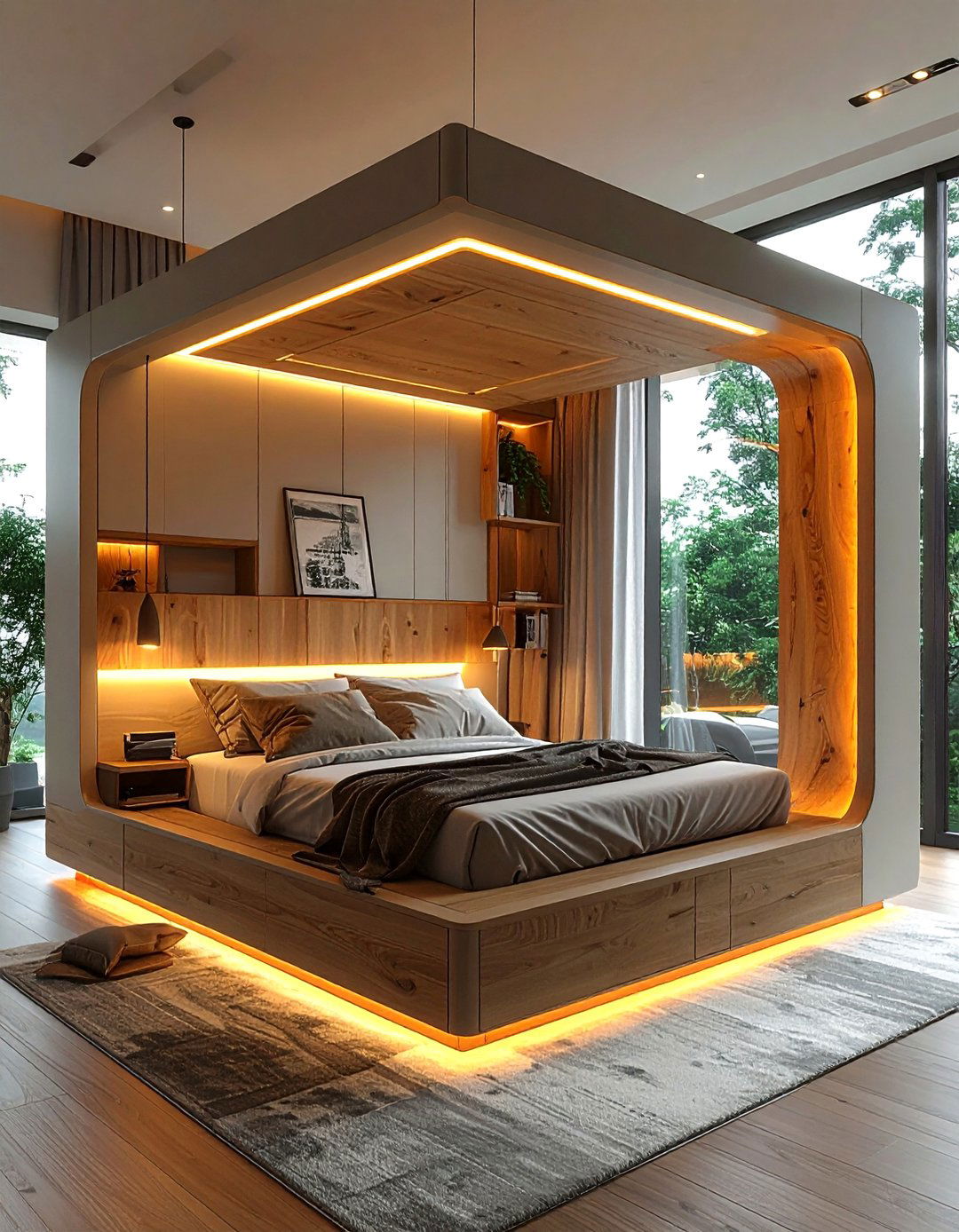
Modern design meets space efficiency with floating bed platforms that create the illusion of more floor space while defining a dedicated sleeping area. These elevated platforms appear to hover above the ground, supported by hidden structural elements that maintain clean, minimalist lines. Storage compartments built into the platform base provide hidden organization for bedding, clothing, and personal items. The visual lightness of floating designs makes small bedrooms feel more spacious while creating distinct zones for sleeping and living. Integrated lighting beneath the platform creates a warm glow that adds ambiance during evening hours. The elevated position naturally separates the sleeping area from the rest of the room without requiring walls or curtains. These platforms can be customized with built-in side tables, charging stations, and reading lights for maximum functionality. The modern aesthetic works well with contemporary design schemes while providing practical benefits for small space living.
7. Bunk Bed Alcove Systems
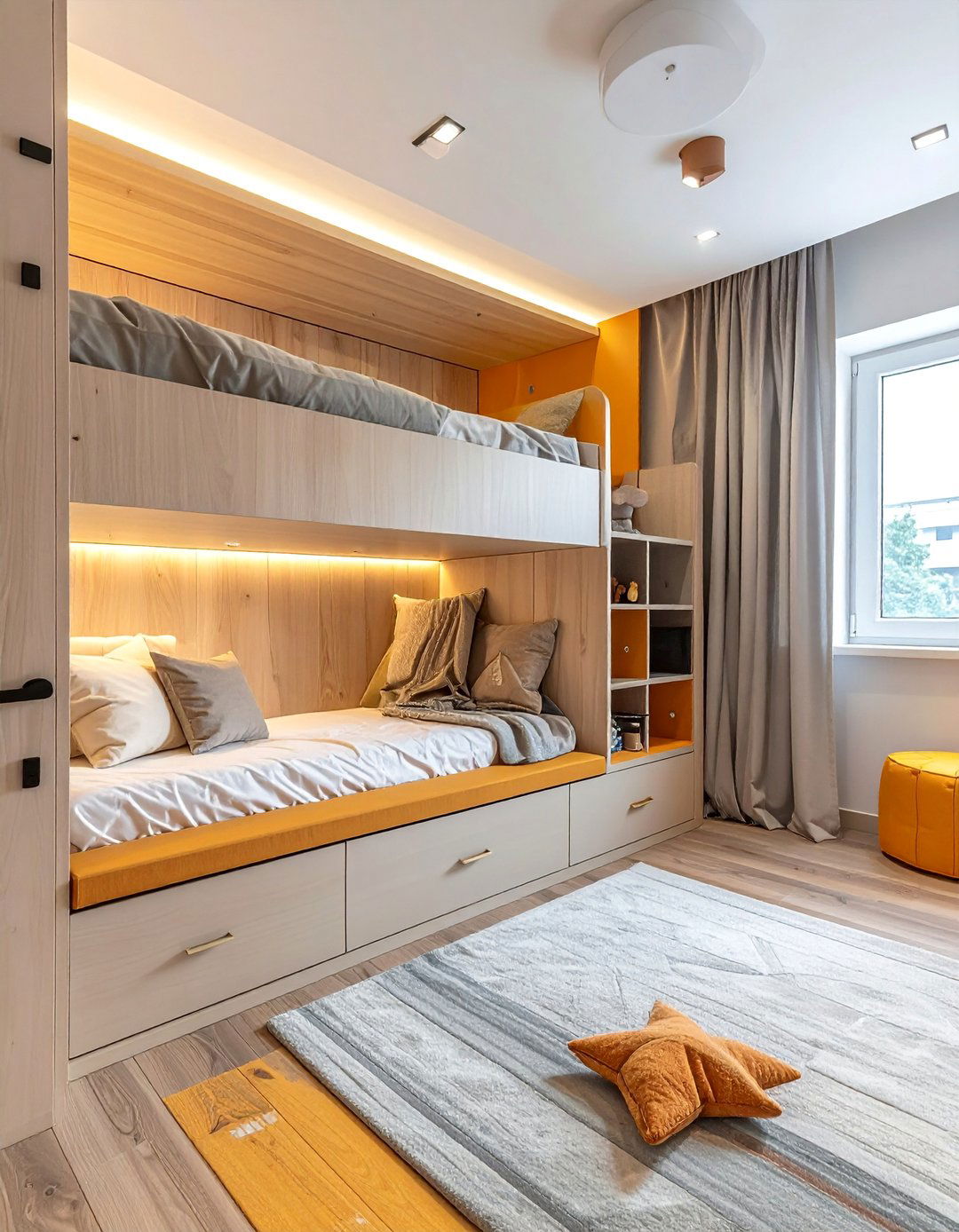
Can you imagine creating multiple sleeping spaces within a single room while adding architectural interest? Built-in bunk bed alcoves accomplish both goals by integrating sleeping areas directly into the room's structure. Each bunk features its own enclosed space with personal lighting, storage cubby, and privacy curtains. The surrounding framework provides opportunities for additional storage, display shelves, and even small desk areas. Individual reading lights and charging stations make each bunk feel like a private retreat rather than shared space. The alcove design eliminates the institutional feel of traditional bunk beds while maximizing sleeping capacity. Built-in ladders or small staircases with storage compartments provide safe access to upper bunks. These systems work exceptionally well in children's rooms, guest rooms, or vacation homes where multiple sleeping options are needed. The integrated design creates a custom look that adds significant value and functionality to any bedroom.
8. Closet Conversion Bed Nooks
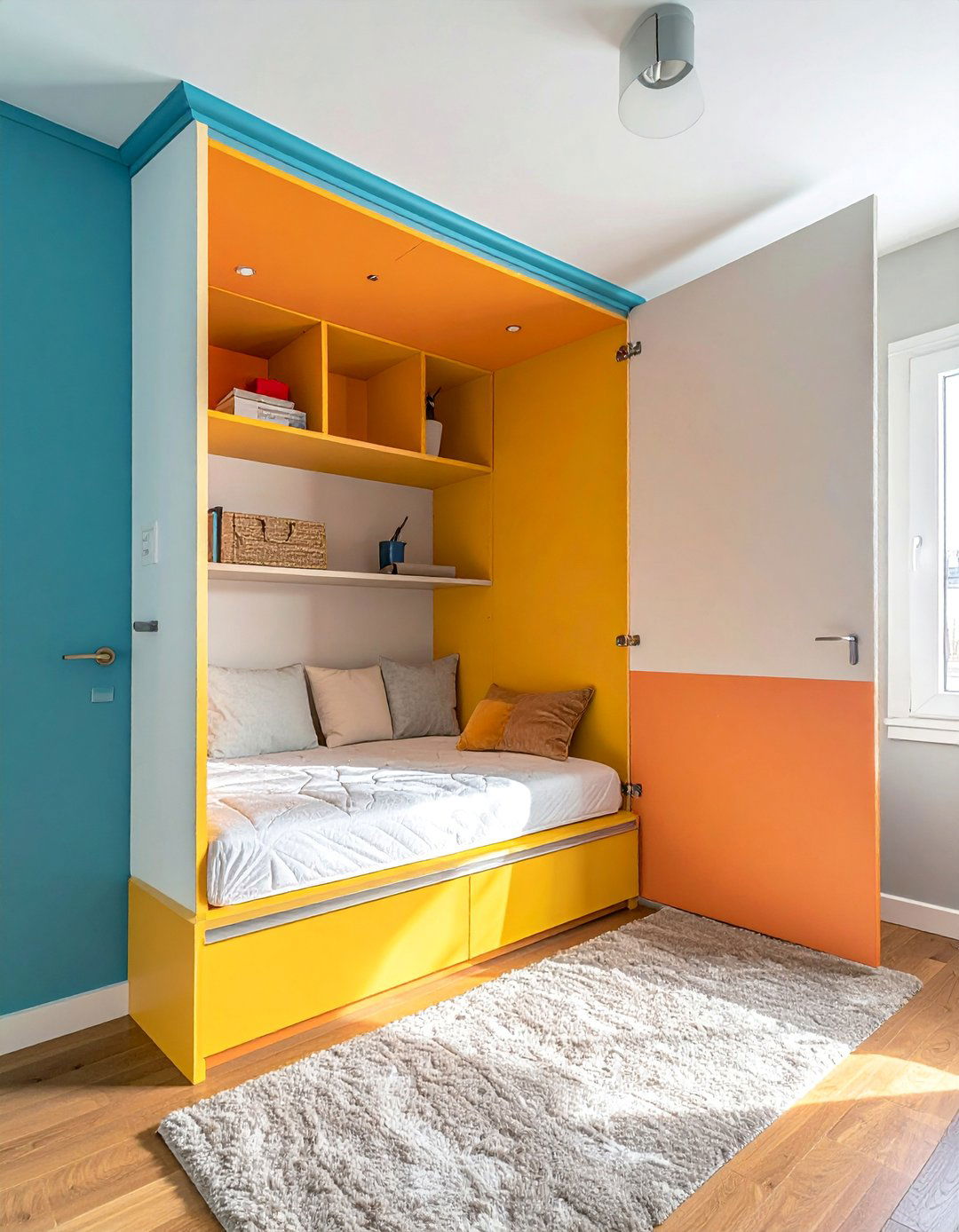
Transform an underutilized closet into a charming bed nook that frees up valuable floor space in your bedroom. Removing closet doors instantly opens up the space while maintaining the intimate, enclosed feeling that makes nooks so appealing. The existing closet structure provides natural boundaries that define the sleeping area without requiring additional construction. A platform bed or mattress on the floor fits perfectly within standard closet dimensions while creating storage opportunities underneath. Former closet rods can be replaced with shelving for books, decorative items, and bedtime essentials. Painting the interior walls in a contrasting color creates visual depth and emphasizes the nook's unique character. Adding curtains at the entrance provides privacy options while maintaining flexibility for daily use. This conversion works particularly well for children's rooms where play space is prioritized over extensive clothing storage. The cozy proportions create a magical sleeping environment that feels like a secret hideaway.
9. Reading Corner Bed Combinations
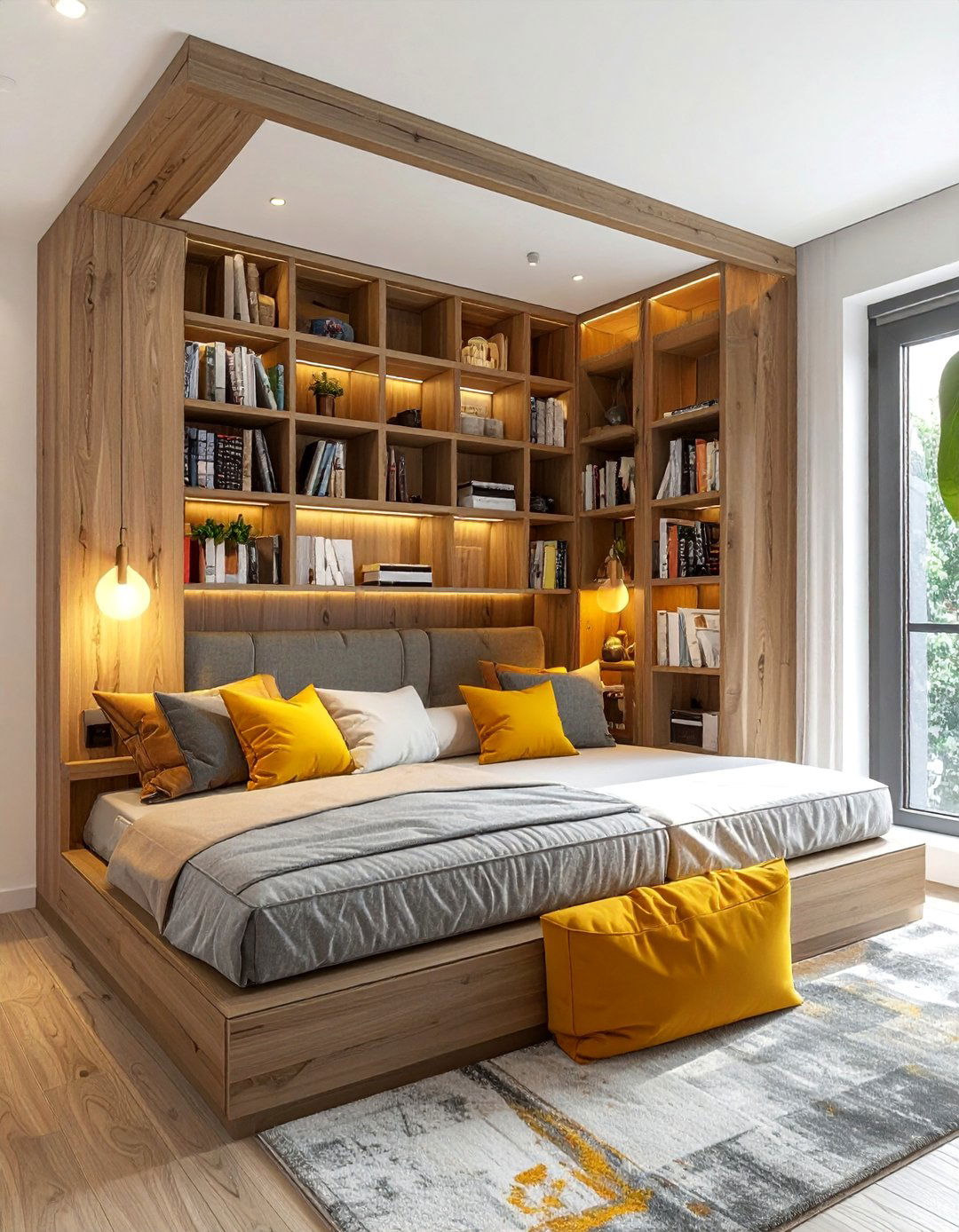
Why choose between a reading nook and sleeping space when you can have both in one perfectly designed corner? These hybrid spaces feature comfortable seating during the day that transforms into a cozy bed at night. Built-in bookshelves surround the space, creating an intimate library atmosphere that encourages relaxation and reading. Proper task lighting ensures comfortable reading during daytime hours while providing soft ambiance for evening relaxation. Storage ottomans or built-in compartments hold extra bedding and pillows for easy nighttime conversion. The corner location maximizes natural light from two walls while creating a defined space within the larger room. Custom cushions and pillows in coordinating fabrics maintain design continuity between day and night functions. These spaces work exceptionally well for guest rooms that serve multiple purposes or for creating personal retreats within busy households. The dual functionality ensures the space feels purposeful and used throughout the day rather than sitting empty until bedtime.
10. Murphy Bed Alcove Designs
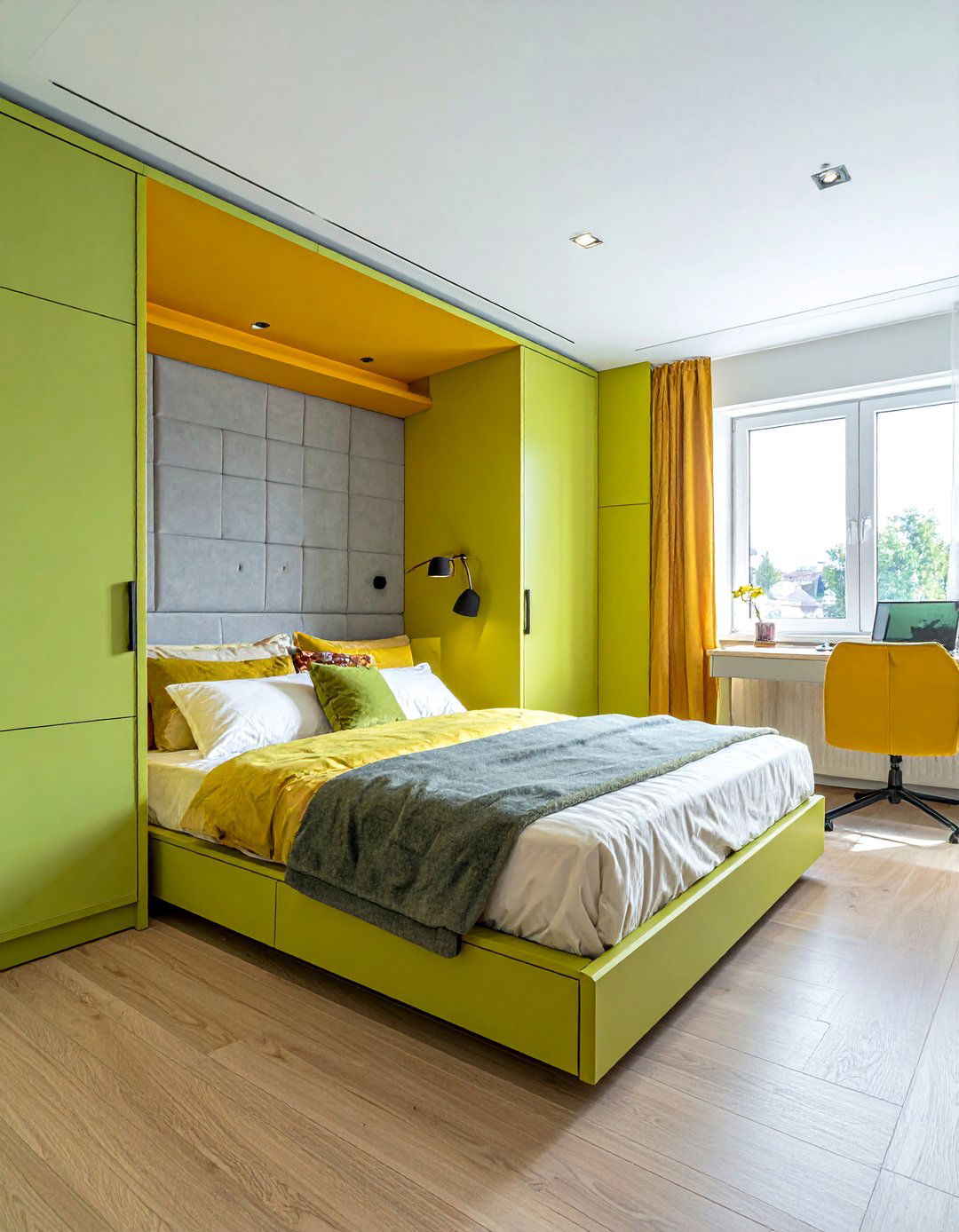
Space efficiency reaches new heights with Murphy bed alcoves that completely disappear during daytime hours while providing full-sized sleeping comfort at night. The surrounding alcove structure houses the folding bed mechanism while providing permanent storage and display opportunities. Built-in desks, entertainment centers, or seating areas occupy the space when the bed is stored, creating dual-purpose rooms that adapt to changing needs throughout the day. Custom cabinetry surrounding the Murphy bed mechanism ensures a cohesive look whether the bed is deployed or hidden. Integrated lighting provides both task illumination and ambient mood lighting for different activities. The alcove design eliminates the institutional appearance of standalone Murphy beds while adding architectural character to the room. Professional installation ensures smooth operation and long-term durability. These systems work exceptionally well in studio apartments, home offices, or guest rooms where space must serve multiple functions without compromise.
11. Canopy Tent Bed Nooks
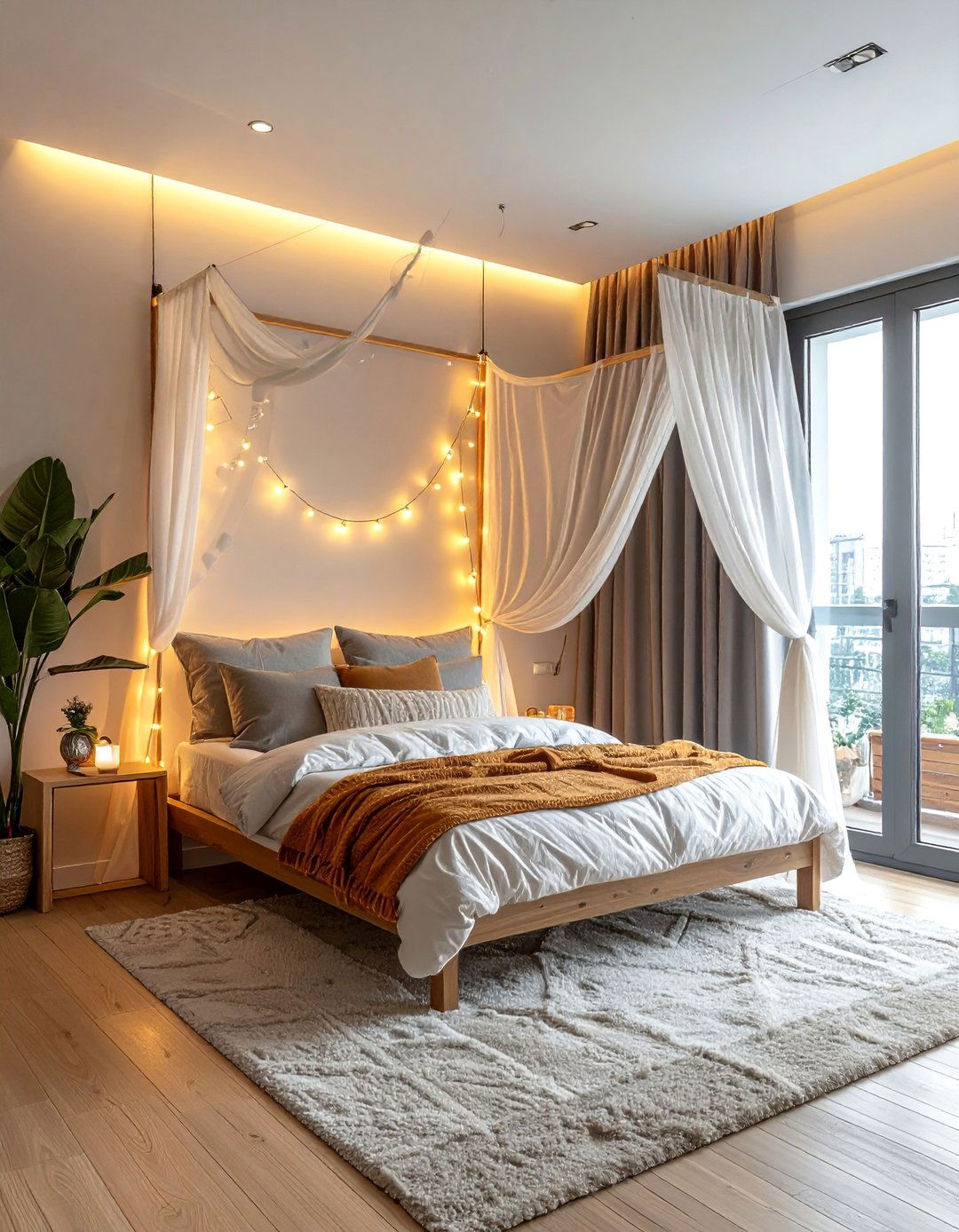
What could be more magical than sleeping inside your own private tent every night? Fabric canopies create intimate bed nooks that transform ordinary sleeping areas into adventure-themed retreats. Lightweight fabrics suspended from ceiling tracks or rods provide privacy and visual separation without permanent construction. The tent-like enclosure creates a cozy microclimate that feels secure and separate from the outside world. Layering different fabric textures and patterns adds visual interest while maintaining the playful, camping-inspired theme. String lights woven through the canopy fabric create a starlike effect that enchants both children and adults. The soft fabric boundaries define the sleeping space while maintaining flexibility for furniture rearrangement. Multiple fabric panels allow for customization of privacy levels and seasonal decoration changes. These nooks encourage imaginative play while providing practical sleeping solutions for children's bedrooms, playrooms, or themed guest spaces that prioritize whimsy and comfort.
12. Corner Platform Bed Nooks
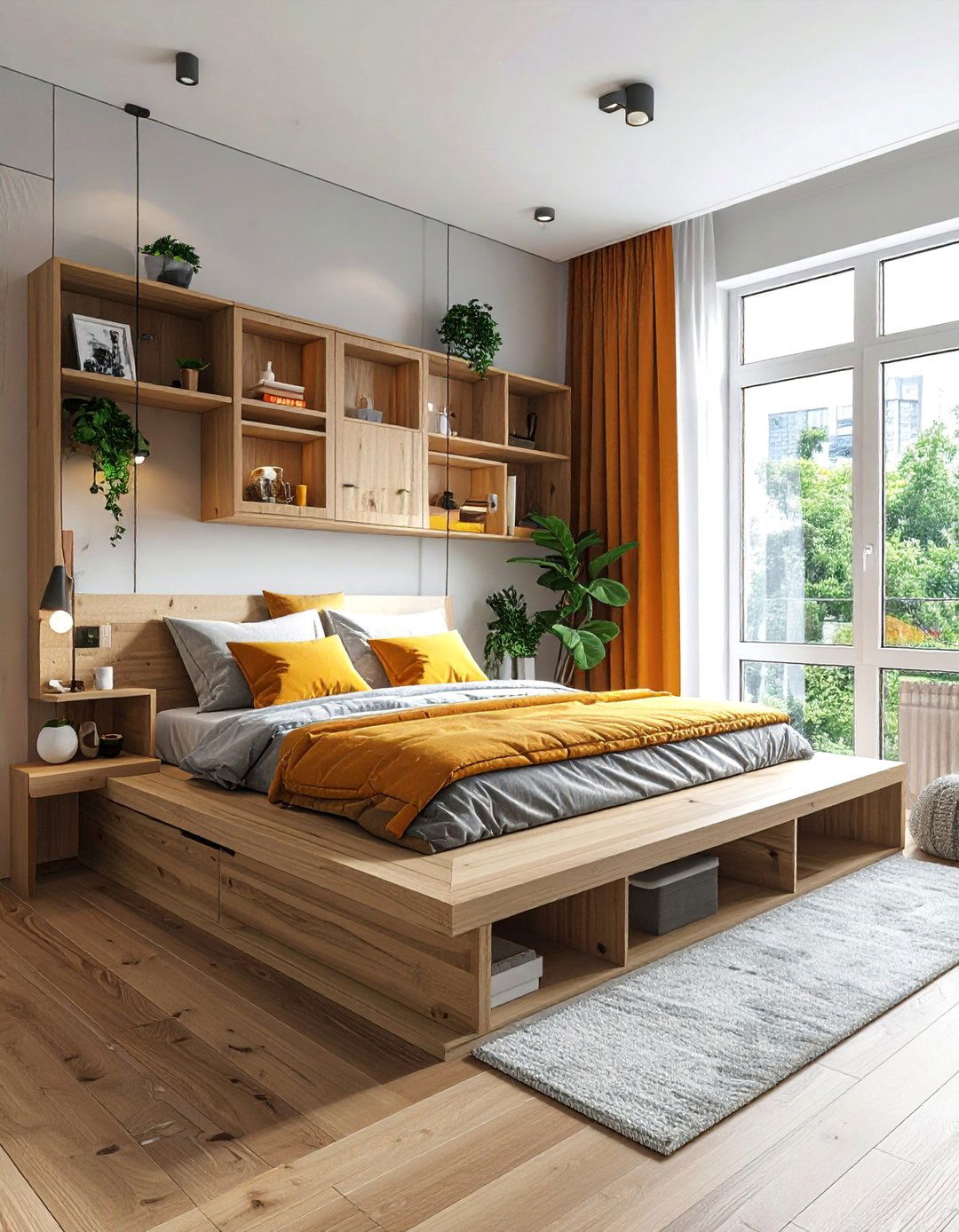
Corner spaces often go unused, but they offer perfect opportunities for creating elevated bed nooks that maximize both floor space and storage potential. The corner position naturally defines the sleeping area while leaving the center of the room open for other activities. Elevated platforms create storage opportunities underneath while providing a sense of separation from daily living areas. Built-in corner shelving utilizes vertical space for books, decorative items, and personal belongings. The raised position creates a sense of privacy and retreat while maintaining visual connection to the rest of the room. Custom steps or small ladders provide access while incorporating additional storage compartments. Corner windows, when present, create beautiful natural light and ventilation for the sleeping area. The platform design can incorporate charging stations, reading lights, and small side tables for maximum functionality. These nooks work particularly well in loft spaces, studio apartments, or bedrooms where traditional furniture arrangements don't optimize the available square footage.
13. Minimalist Floor Bed Nooks
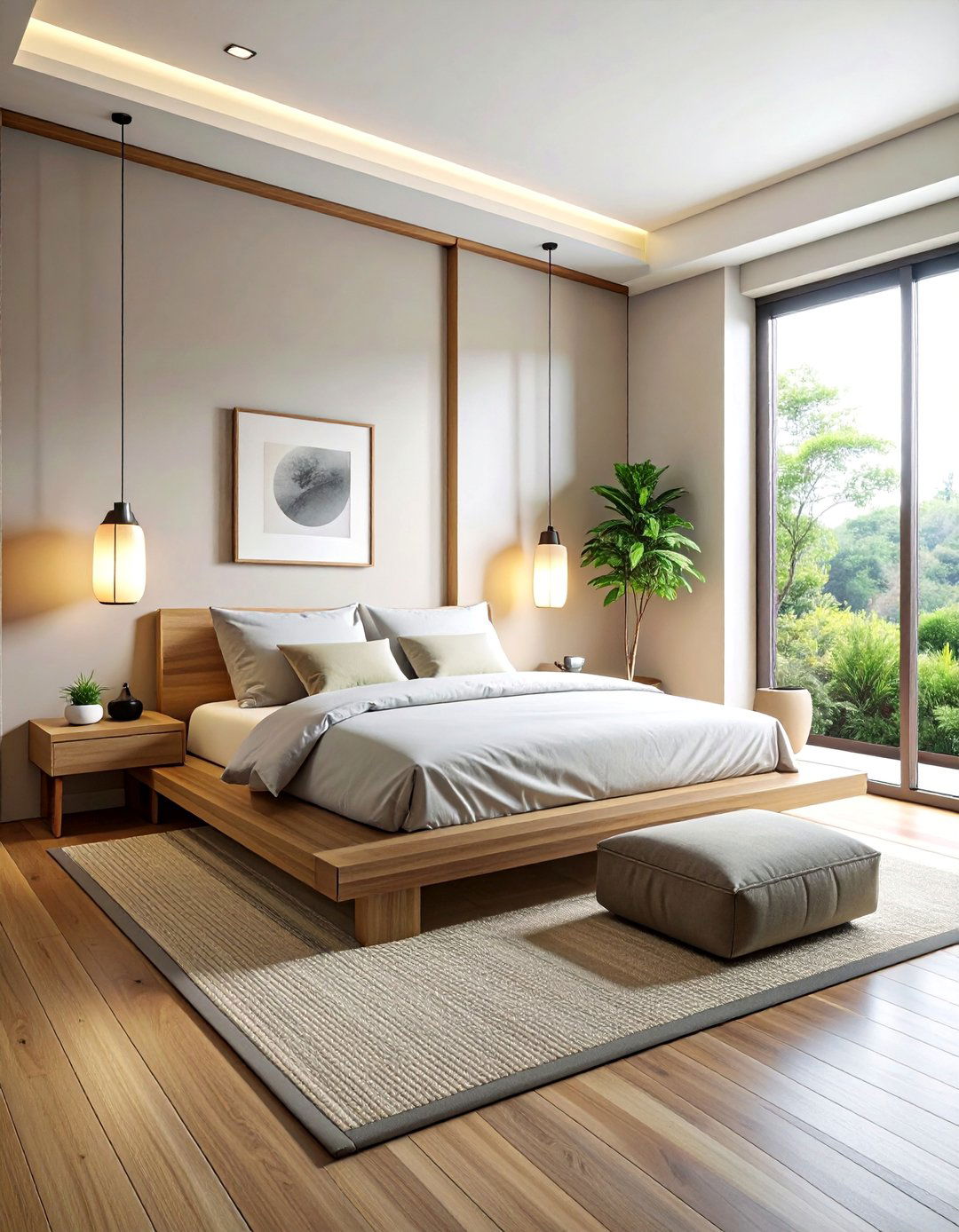
Sometimes the simplest solutions create the most impactful results, as demonstrated by minimalist floor bed nooks that embrace Japanese-inspired design principles. Placing a quality mattress directly on the floor eliminates the need for bed frames while creating clean, uncluttered sleeping spaces. The low profile maintains open sight lines throughout the room while defining a dedicated rest area. Natural materials like bamboo, linen, and wood create calming environments that promote restful sleep. Built-in platforms or raised areas can define the sleeping space without overwhelming the minimalist aesthetic. Strategic lighting placement creates ambiance without cluttering surfaces with lamps or fixtures. The absence of traditional furniture allows for flexible room arrangements that adapt to changing needs. Storage solutions focus on hidden compartments and built-in elements that maintain the clean visual lines. These nooks work exceptionally well for those seeking calm, meditative sleeping environments that prioritize simplicity and mindfulness over material accumulation.
14. Bay Window Sleeping Alcoves
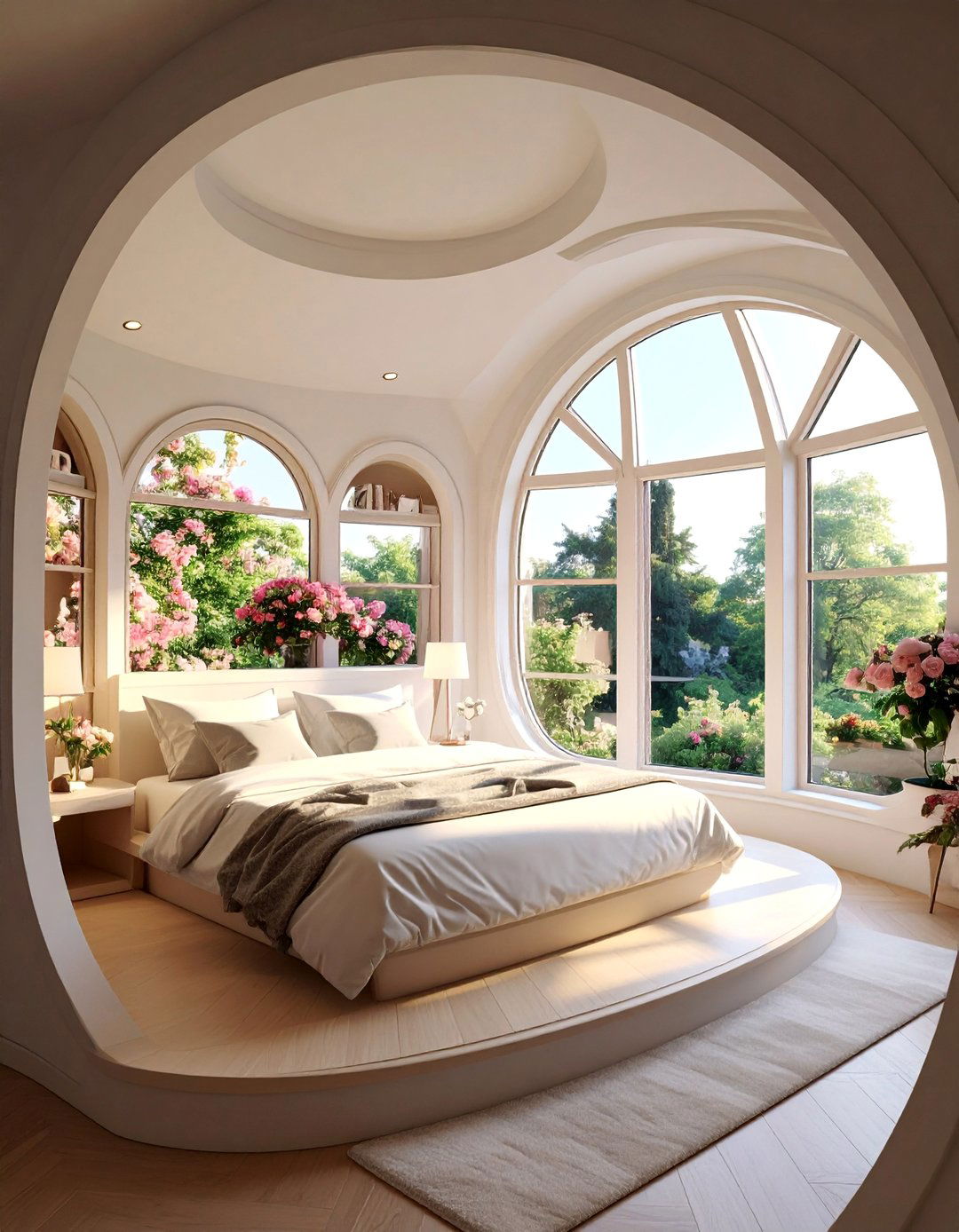
Natural architectural features like bay windows create perfect opportunities for bed nooks that feel like sleeping in a garden pavilion. The curved or angled walls naturally define the sleeping space while providing multiple windows for natural light and ventilation. Built-in seating around the window perimeter creates daytime functionality while accommodating nighttime bedding. The elevated position typical of bay windows adds to the retreat-like feeling while providing beautiful views. Custom cushions and pillows in weather-resistant fabrics create comfortable seating that transitions easily to sleeping arrangements. The multiple windows require thoughtful treatment with curtains or blinds that provide privacy without blocking natural light. Built-in storage beneath window seats accommodates bedding, pillows, and seasonal items. The unique shape of bay windows creates intimate spaces that feel separate from the main room while maintaining visual connection. These alcoves work particularly well for master bedrooms where a romantic sleeping environment enhances the overall bedroom experience.
15. Multi-Level Storage Bed Nooks
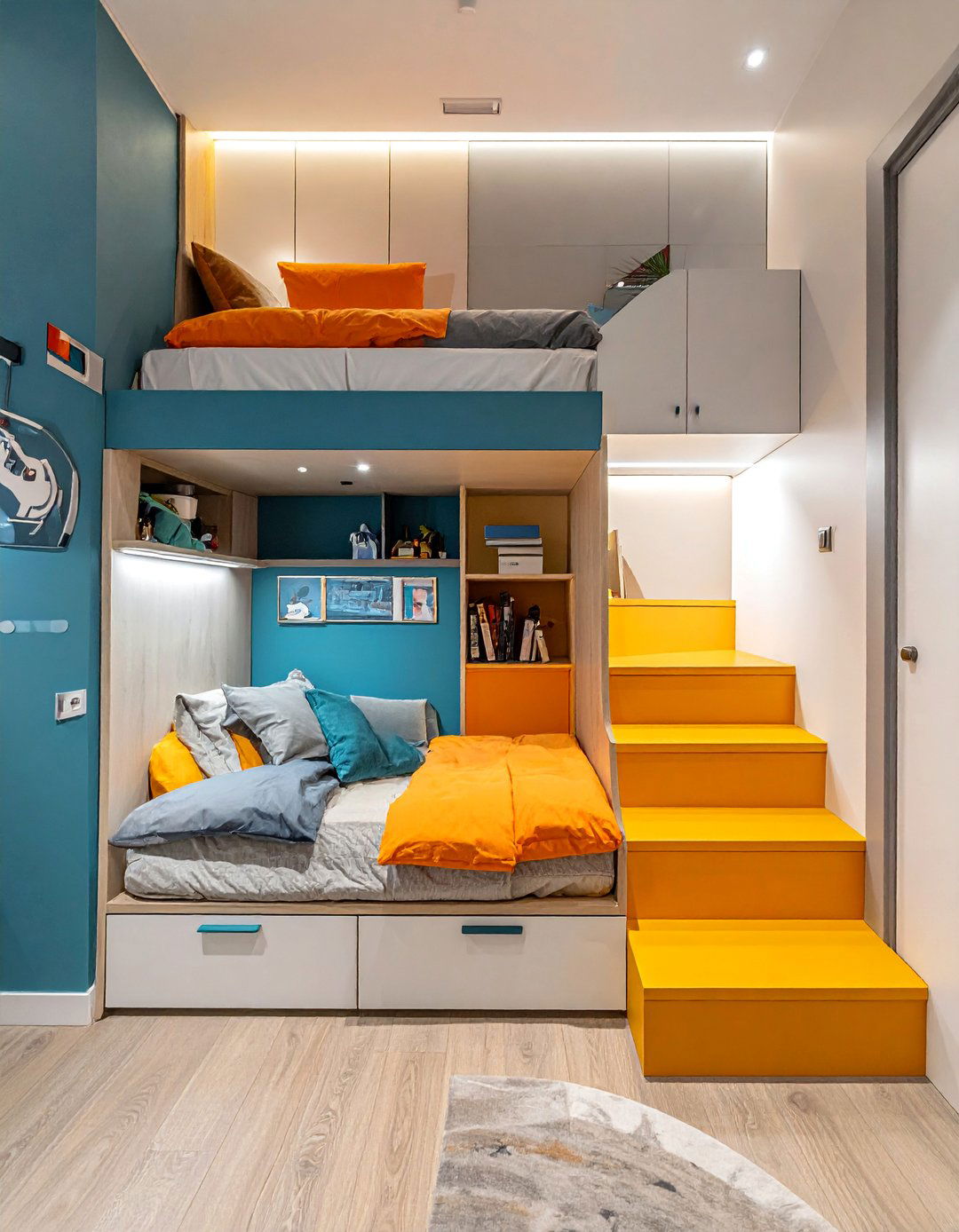
Do you need sleeping space and extensive storage in a compact footprint? Multi-level bed nooks stack functionality vertically to create comprehensive solutions for small bedrooms. The sleeping area occupies the upper level while storage, desk space, or seating fills the lower areas. Built-in stairs provide access while incorporating drawers, shelves, or closet space within each step. The elevated sleeping position creates a sense of privacy and separation while maximizing floor space below. Integrated lighting at multiple levels ensures proper illumination for all activities. The structural framework provides opportunities for hanging storage, display shelves, and personal organization systems. Safety railings incorporate additional functionality like bookshelves or nightstand surfaces. These complex systems require professional design and installation but provide unmatched functionality for challenging spaces. The result is a bedroom that accommodates all necessary functions within a surprisingly compact footprint while maintaining an organized, attractive appearance that enhances rather than overwhelms the space.
Conclusion:
Bed nooks represent the perfect marriage of creativity and practicality in modern bedroom design, offering solutions for every space challenge and style preference. These innovative sleeping arrangements prove that small spaces don't require sacrificing comfort or aesthetics. From built-in alcoves with extensive storage to simple curtain-divided studio nooks, each approach maximizes your room's potential while creating intimate retreat spaces. The key lies in matching the right nook style to your specific needs, room architecture, and lifestyle requirements. Whether you choose a dramatic under-stair conversion or a minimalist floor bed arrangement, these designs transform ordinary bedrooms into extraordinary personal sanctuaries. By embracing vertical space, utilizing architectural features, and incorporating multi-functional elements, bed nooks demonstrate that thoughtful design creates more value than square footage alone.

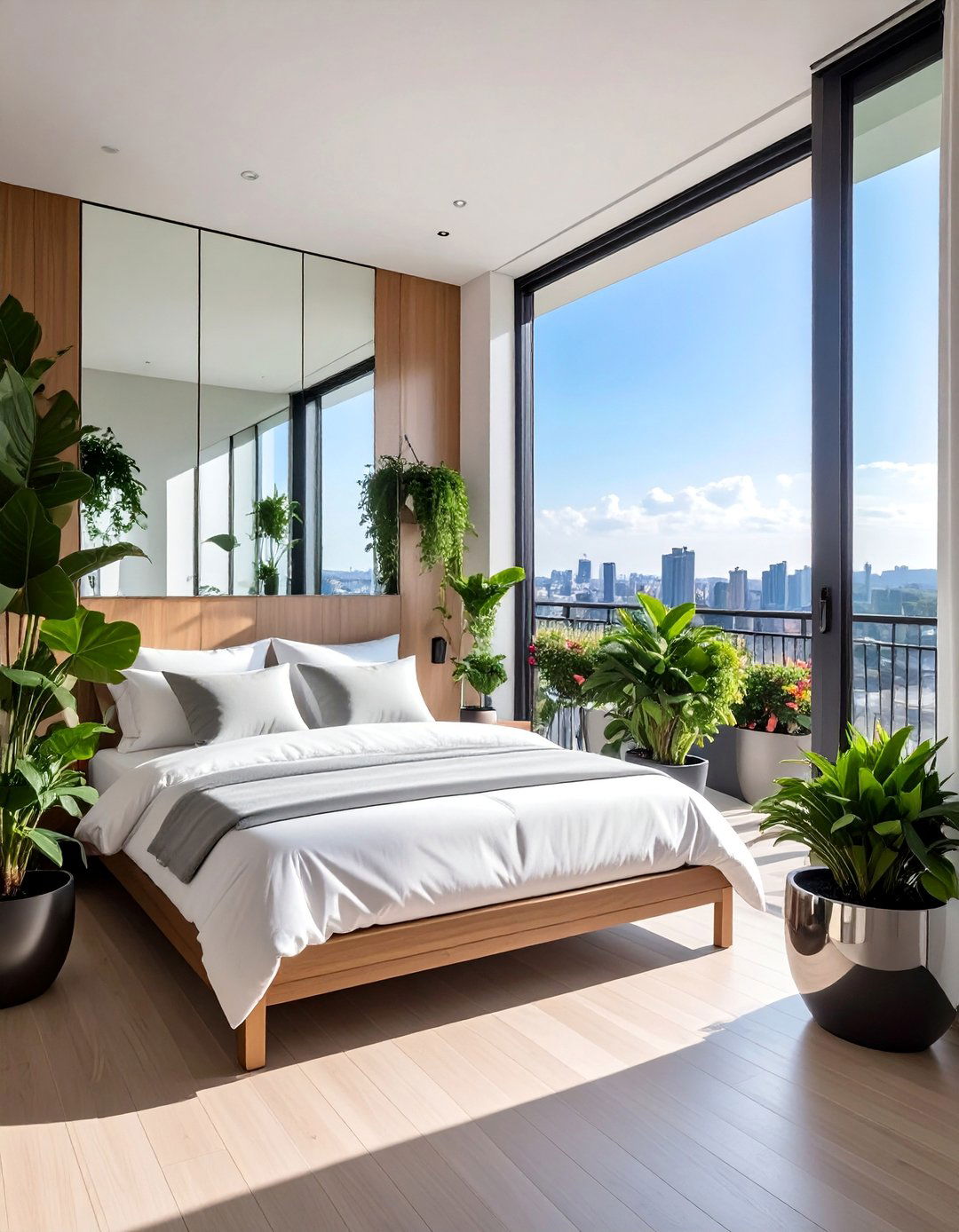
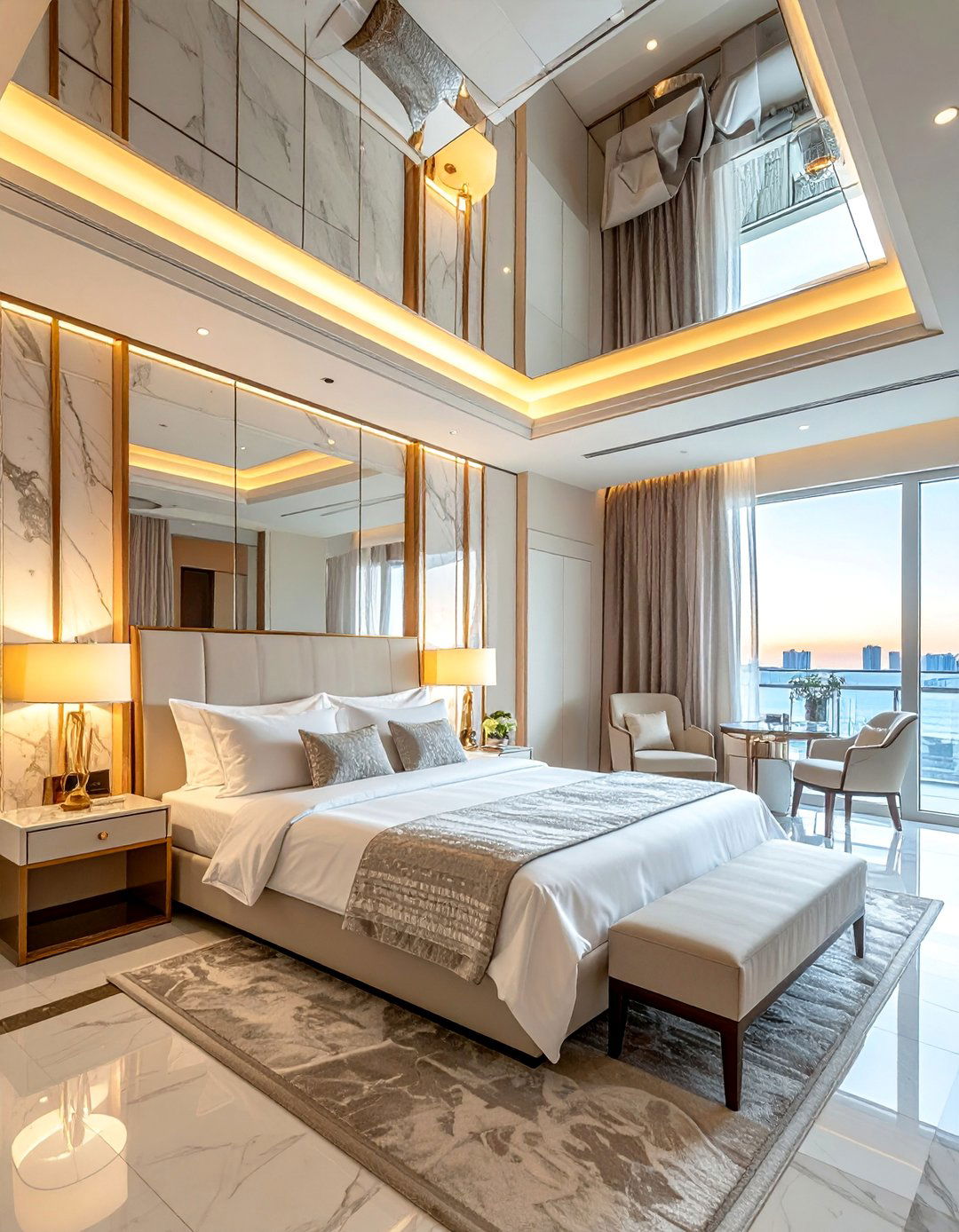
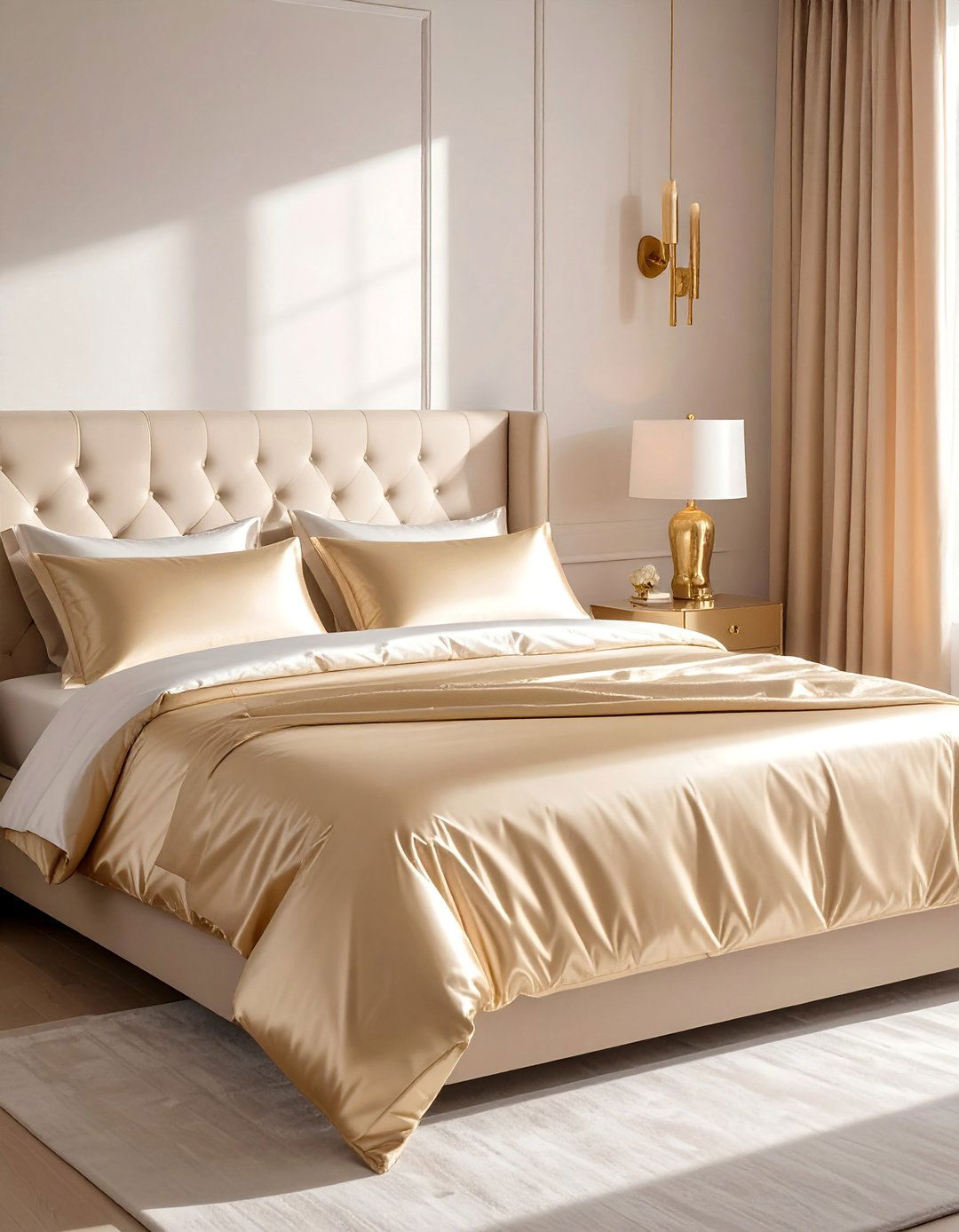
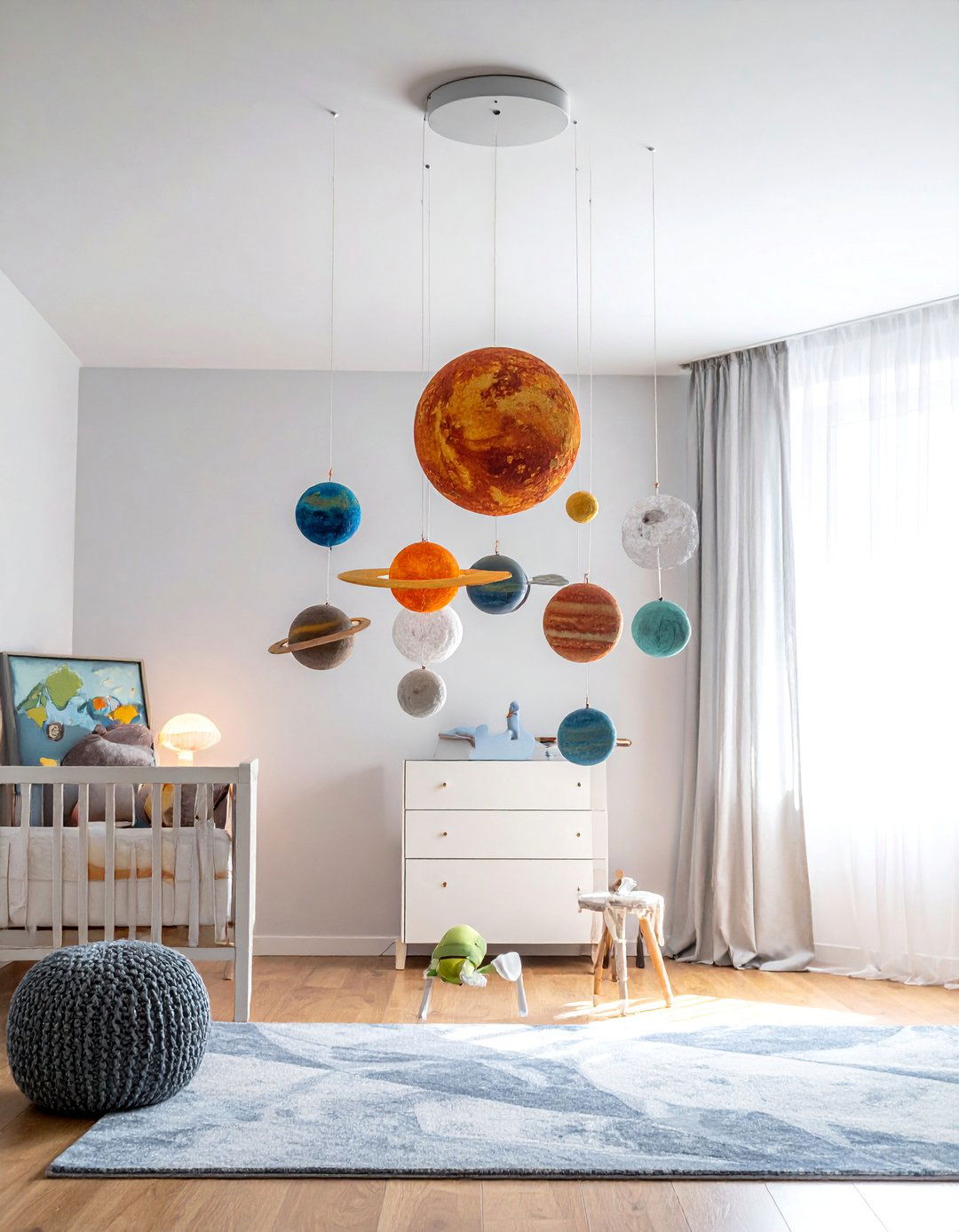
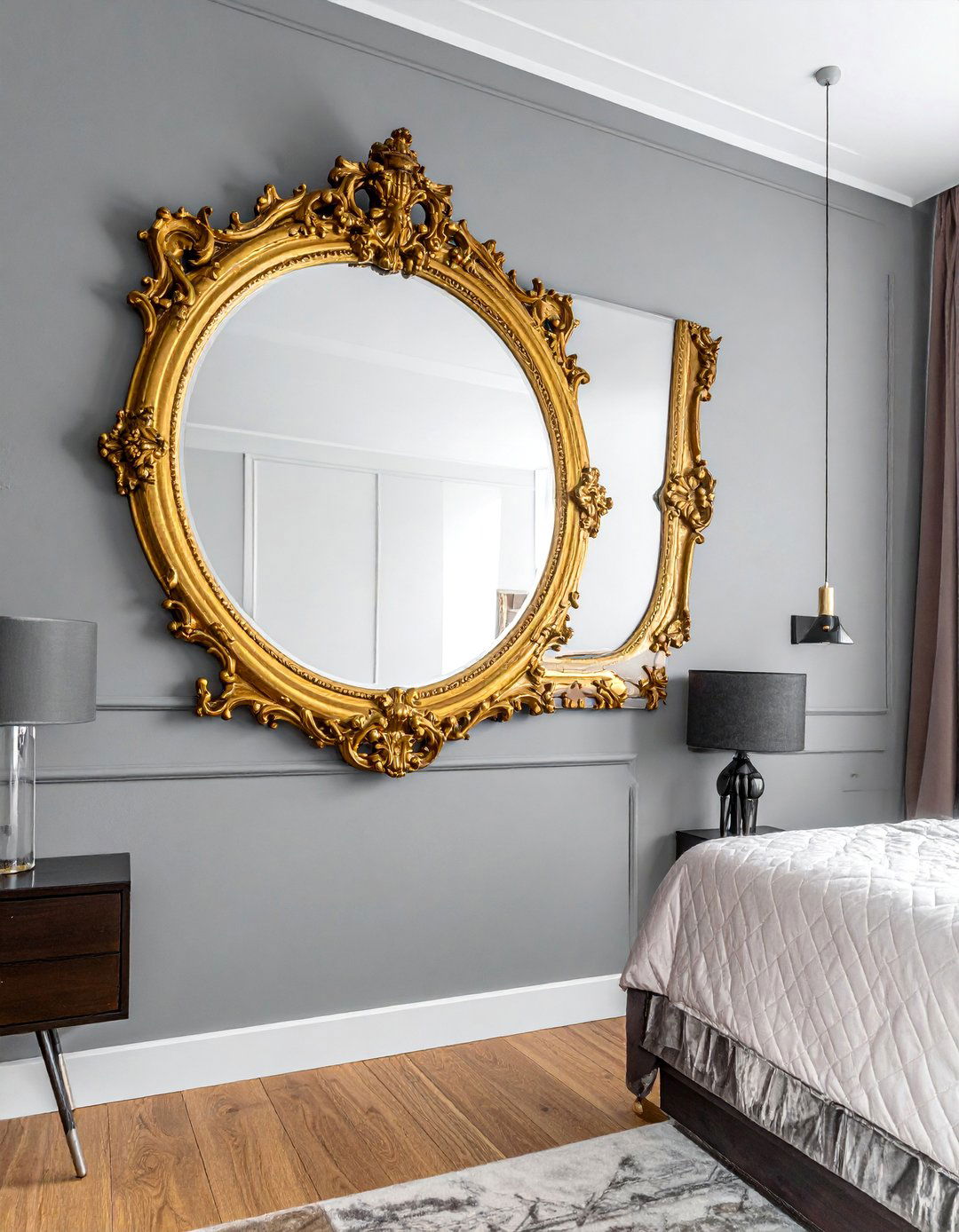
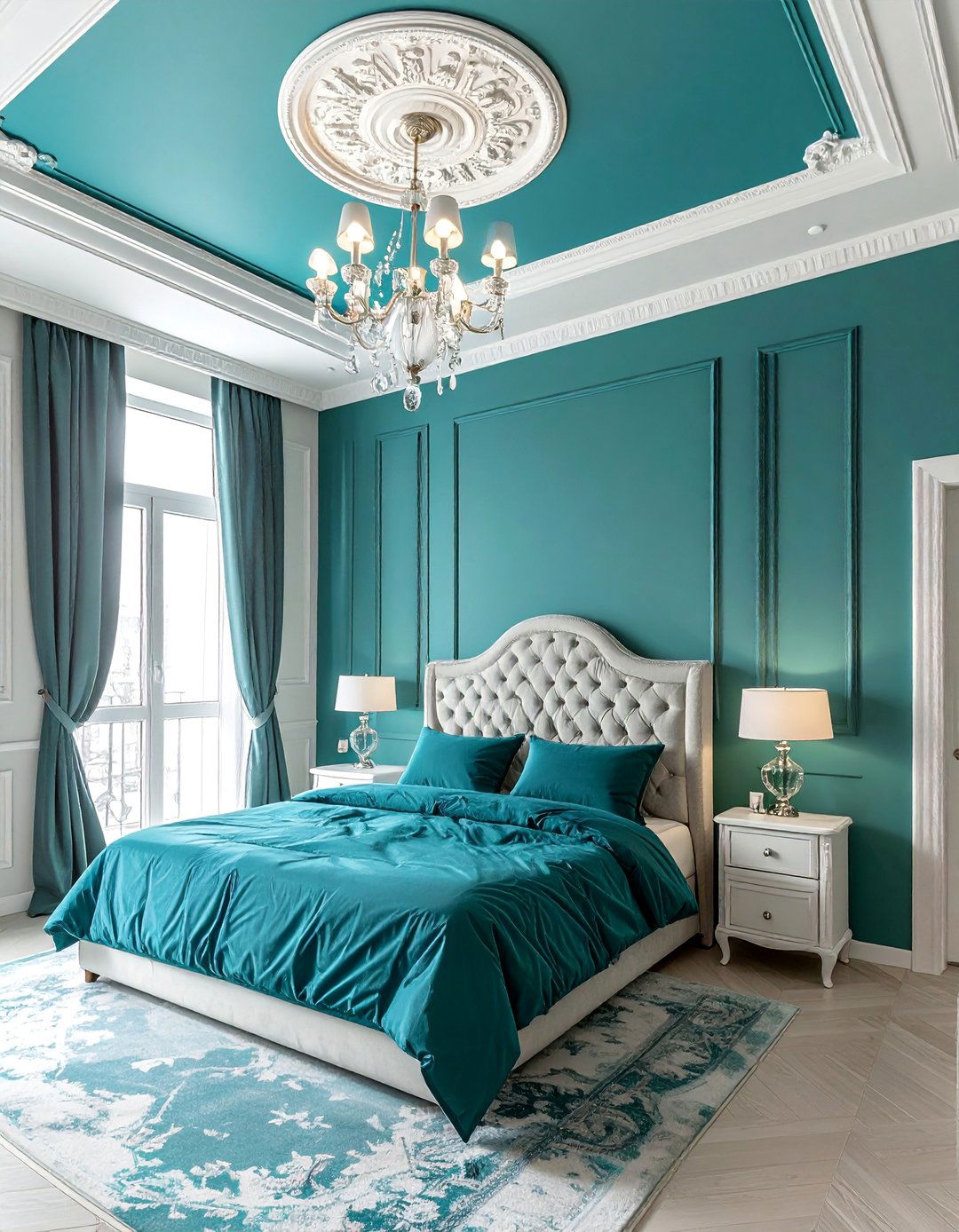
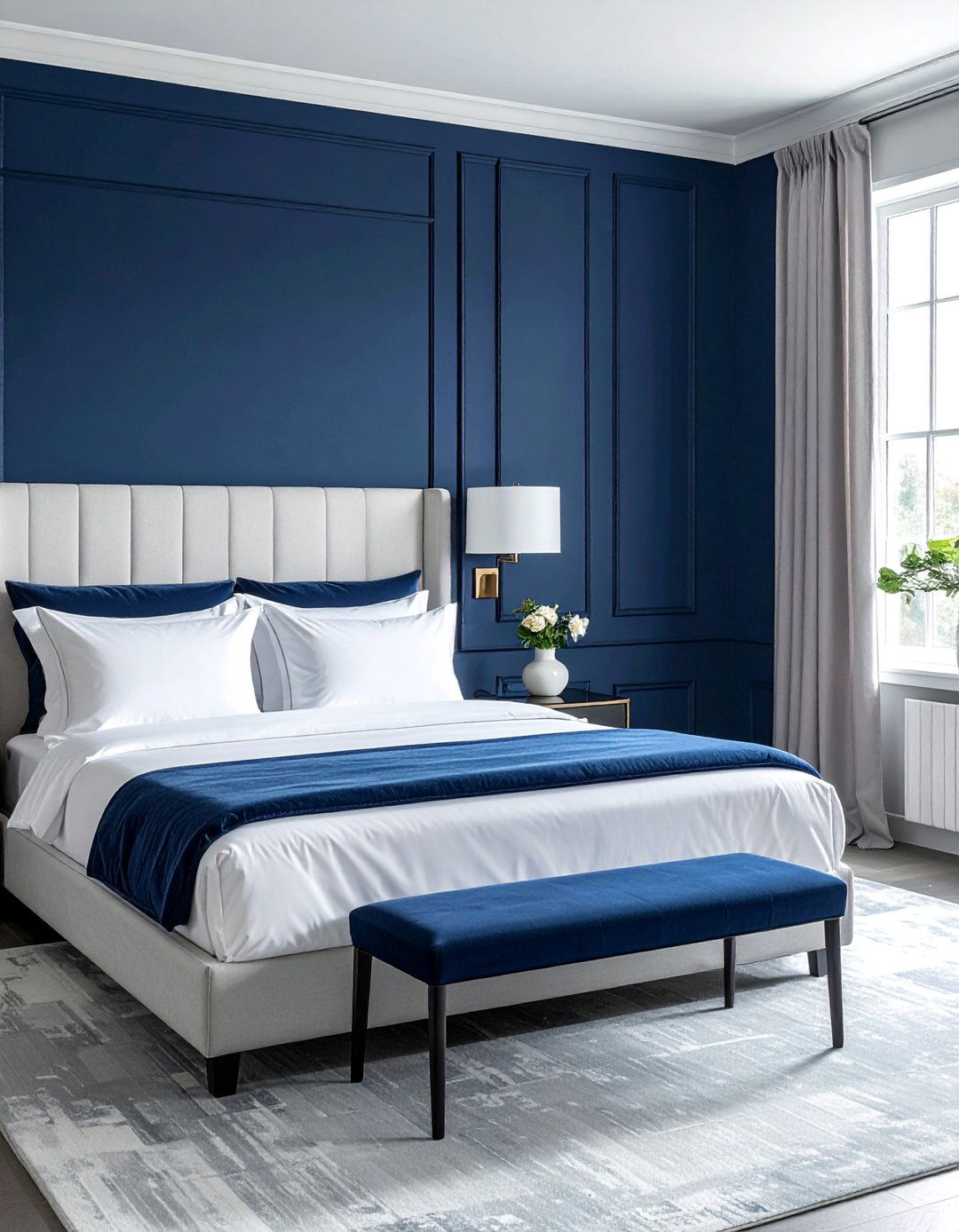
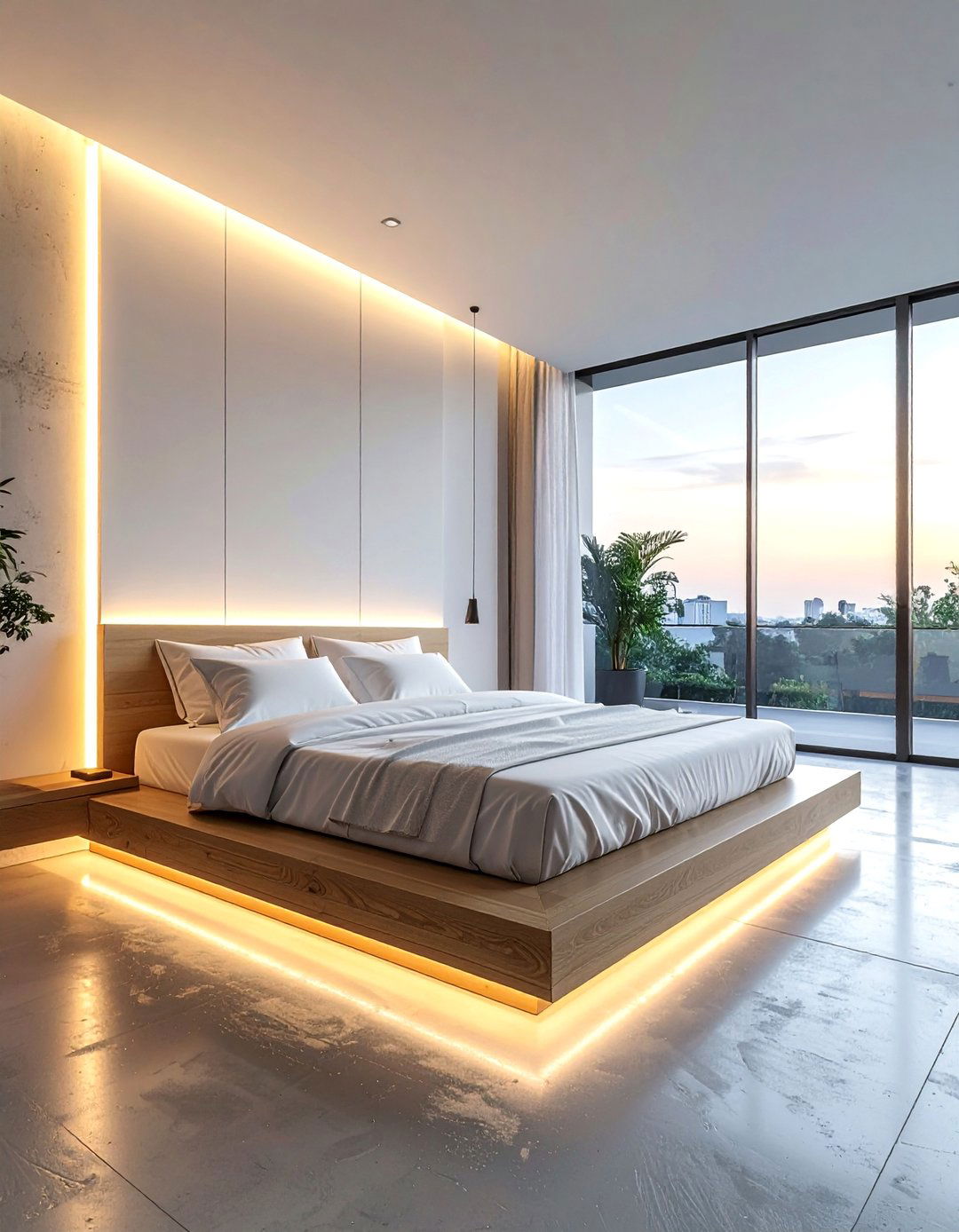
Leave a Reply